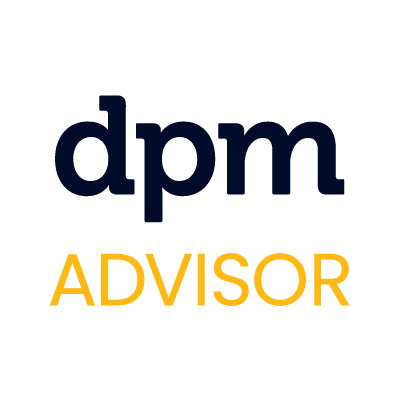“Digital project management process” could refer to a lot of things:
- the process for a specific digital project type such as a website or an app
- the phases of the project management life cycle, or
- specific project management processes such as risk management or change management
You can find guides to digital project lifecycle, methodologies, and various how-to guides for specific processes.
Today, I’ll talk about the processes that project managers conduct on daily, weekly, and monthly bases, and how to improve these processes to deliver more successful projects.
Why?
Because, according to research from PMI, 58% of companies state that having more established practices and processes is crucial to the success of their projects. Which means it’s critical to define your organization’s digital project management processes early and well. This article will help.
I can’t cover everything here (if you’re just starting out I suggest taking a look at The DPM School), but if you’re looking for a good place to start, here’s an overview of how you can level up to really get your project processes humming.
In this article
- Brief Intro To DPM
- 5 Ways To Improve DPM Processes
- Creating A Process That Works Is An Ongoing Effort
A Brief Intro to Digital Project Management
While digital project management is closely tied to the world of project management, there are some key differences to note.
Digital project management is concerned with managing projects that involve digital elements. It follows the usual project management lifecycle.
The main stages of this lifecycle are project initiation, project planning, project execution, monitoring & controlling, and project closure. This is the basic flow of the digital project management process.
In digital projects, the role of the digital project manager requires knowing a little bit about everything for the projects they are working on. This might include QA, UI/UX, graphic design, coding, website hosting, SEO, and analytics, along with the usual project management responsibilities.
5 Ways To Improve Your Digital Project Management Processes
There are three basic levels that your organization could be at:
- You might have fully-established processes that work well and leave room for adaptability.
- You might have some processes in place which need fine-tuning or expansion.
- You might not have any processes in place.
If you’re #2 or #3 on the list, there are a few ways you can go about improving or creating your digital project management process. Here are a few suggestions:
1. Use Tools
There are lots of tools out there that are designed to facilitate process creation and improvement. A few of the more common are:
- workflow management software for designing and automating work processes
- change management tools for implementing changes in your process systematically
- business process management systems (BPMS) for visualizing, automating, adjusting, and standardizing processes
These tools often also come with a wealth of knowledge or a community of peers (in the form of a forum or discussion board) that you can draw on if your processes get stalled.
Related Read: How Many Online Tools Does The Average Digital Project Require?
2. Designate a Process Owner
Another tip for improving your processes is designating a process owner — a person or group in charge of overseeing process improvements and creation. In most organizations, this is often the Project Management Office (PMO), as they can act as a central hub for processes and have final approval on processes, to keep all project managers on the same page.
If your organization doesn’t have a PMO, you can designate one or a few individuals as process owners. By having one person or committee to go to for process changes, new processes, and final approval on processes, there is a single source of truth to ensure alignment throughout the organization on how processes are being carried out, as well as alignment between processes. This process owner could be someone in quality assurance, operations, or business analysis.
3. Get Management on Board
Justifying process creation or changes to management may be met with resistance.
Try to find out the reasons behind the resistance and understand management’s point of view. Then you can find ways to compromise or pitch why process improvements would actually be beneficial. Management’s perspective might even lead you to decide to shelve or discard the process improvements.
4. Find Process Gaps
Where are the gaps in your existing processes and how can you fill them?
Look for two types of missing processes:
- Look for gaps between processes. For example, you may have a risk management process, but you might not have any quality management guidelines.
- Look for gaps within processes. You might have a project closure process that is missing a step for reviewing lessons learned with the team.
Listed below are a few daily project management processes that you might be missing. Take some time to evaluate these carefully. How could you do each of them better? How can you implement a process for each?
Risk Management
Risk management involves processes around predicting, planning for, mitigating, and avoiding risks. In a study from 2018, project managers stated that they employed risk management strategies only 62% of the time, which is quite low when you consider the relative importance of this digital project management process.
There are several ways to go about improving your risk management strategy.
One of the easiest ways is to create document templates for your project managers to use, for things such as a RAID log.
It’s also worth setting out guidelines for how and when to conduct risk management during a project. Conducting it at the same time in your project process (preferably earlier rather than later) will allow your team to be more efficient and effective at catching risks before they become issues.
Closely related to risk management is issue management. Issue management deals with issues or problems that are currently occurring, whereas risk management deals with potential risks that may or may not arise during a project.
More Info: See our guide for making a risk management plan. Listen to our podcast: How To Talk About Risk And Have Everyone Listen.
Budgeting and Estimating
Budgeting and estimating are important parts of any project, and are often constantly in jeopardy due to misestimations by team members, client change requests throughout projects, and the inevitability of unforeseen issues arising throughout projects.
While it’s difficult to get a budget exactly right every time, there are several strategies you can use to get better estimates to provide your clients or the higher-ups.
Interestingly, Gartner found that projects with higher budgets also had a higher failure rate — projects with a budget over $1 million had a failure rate that was 50% higher than projects with a budget under $350,000.
This could be due to the higher expectations that come with a higher budget, or due to misestimation of time and resources.
Whatever your project budget, a process for estimating and tracking that estimate throughout the project life cycle is critical.
More Info: Our guide to project estimation is a full guide that outlines an effective process. This is a great place to start to improve your own estimation process — although you might have your own ideas to improve it further!
Project Planning
Creating a project plan is another crucial process. It helps with creating estimates, defining deliverables and project scope, tracking dependencies and milestones, and managing resources.
Defining a process for project planning will ensure you get faster and faster at creating project plans, and ensure that all the right people are consulted and agree upon the plan.
More Info: Our guide to creating a project plan has some tips for establishing or improving a project planning process, which you can build off to create a process that works for your team.
Change Management
The outcomes of projects can create many changes for an organization. This could include changes to things like organizational structure, staffing, training, process and policy implementation, and more. It’s necessary to have a change management process to manage the adoption of those results.
Around 68% of companies currently include change management in their process for establishing projects. Given the impact that changes can have on projects and overall organizational success, accounting for changes to projects and processes cannot be optional or only accounted for some of the time.
As mentioned above, appoint a process owner (or owners) to head up change management. This way, you limit the number of cooks in the kitchen, so to speak, while still getting input from the rest of your organization. Ensure broad agreement on the change process, and build in check and balances for further changes.
More Info: Check out this list of great change management tools.
Communication Management
Proper communication is extremely critical to projects. Setting up guidelines and processes for communication for a specific project at the beginning of that project is a best practice when it comes to communication management.
Creating a communication plan is one way to establish these guidelines and processes. You’ll be able to set out what gets communicated to who and when, for everything from getting feedback to providing scope and budget status updates to the frequency of meetings.
A standardized communication management process has benefits beyond project success — it also helps set and manage expectations, manage clients and stakeholders, and plan projects.
More Info: See our full guide to creating a communication plan.
Quality Management
Without a quality management process in place, it’s impossible to consistently and properly ensure quality from deliverable to deliverable and project to project. While it’s important to define a quality management process for your specific project, defining this across your organization is even better. You’ll have standards already in place when you start a new project, so you won’t need to reinvent the wheel every time.
Either way, you will need to create a quality management plan for each project. This has lots of benefits for your projects — it will increase overall deliverable quality, increase collaboration and feedback, and reduce overhead. Setting an organizational process for this will provide these benefits to your entire organization, not just your project.
More Info: Use the process and templates in our quality management plan guide to establish a consistent process that you can implement for all your projects.
5. Create Document Templates
One easy way to improve processes is by creating standardized document templates. If all project managers are working from the same document to start, it will make standardization easier and more consistent.
There are 90+ ready-to-use project management templates in our DPM membership, plus a community of other project managers to chat process management with.
Need expert help selecting the right Project Management Software?
If you’re struggling to choose the right software, let us help you. Just share your needs in the form below and you’ll get free access to our dedicated software advisors who match and connect you with the best vendors for your needs.
Creating A Process That Works Is An Ongoing Effort
Once you’ve got your digital project management process in place, it’s inevitable that they will change and adapt over time. You’ll find new ways of doing things, find more efficiencies, or incorporate new tools or software that will speed up your workflows.
To keep track of how your processes are changing over time, and to plan new process changes, it’s a good idea to create a playbook. The project landscape is ever-changing, so your processes should too.
In fact, the entire philosophy behind our 700+ member community is based around the evolving nature of digital projects. As project managers, we are the folks who are responsible for writing the playbook for how digital projects happen. It’s pretty exciting stuff, so make sure you check it out!
Before you go, make sure you sign up to get The DPM newsletter so you’ll know whenever we publish a how-to guide, podcast, or other useful resource for digital PMs.



